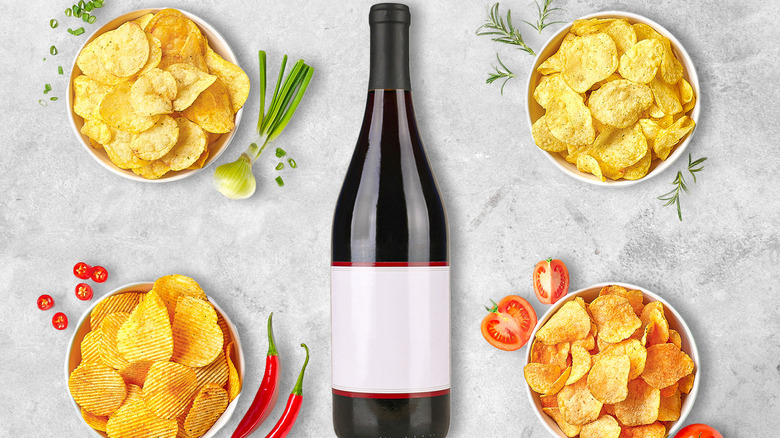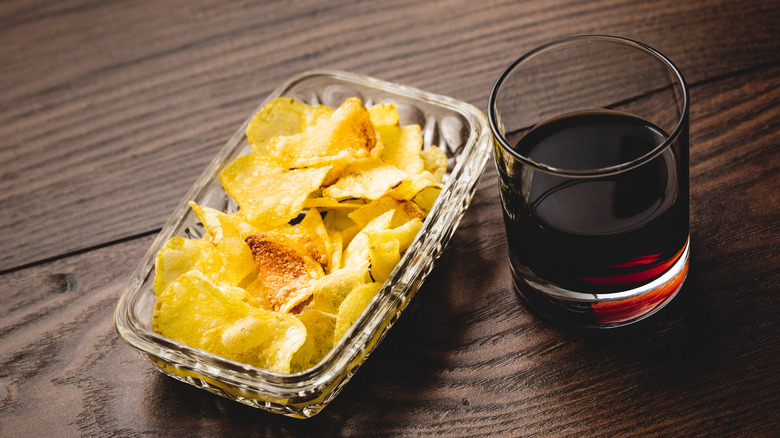Potato Chips Are A Delicious Tool For Learning Wine Pairings, Says Wine Expert Troy Bowen
Wine contains such multitudes. On one end of the spectrum it can seem fruity, fun, and ethereal; a perfectly unassuming conduit to enjoyment. On the other, it can stand imposing, opaque, and elusive; the kind of discipline that must be contemplated carefully and thoughtfully understood. Those in the know will tell you wine is both and neither. Instead, it falls somewhere in between and is, ultimately, what you make of it. To properly enjoy wine, one should strive to fully understand its nuances, and an unlikely ally can help nascent oenophiles expand their appreciation: potato chips.
Drinking wine while eating potato chips is not a hard sell for many, but the value extends beyond mere indulgence. In an exclusive interview, Troy Bowen, owner and sommelier of Noble Riot in Denver, CO, tells Tasting Table that when you're tasting wine the myriad flavors that abound throughout each sip can be reflected, elevated, and transmogrified by the bold flavors of the salty chips.
"Curious about how to separate the different components of a wine and develop more flavor memory?" asks Bowen. "Grab a variety pack [of potato chips] and see how each flavor affects the wine. Sour cream and onion's creaminess will act very differently than BBQ's smoky style." The expert then suggests the taster evaluate how salt and vinegar changes the tartness, sweetness, or softness of a wine. In essence, each chip variety offers a way to analyze each different aspect of taste.
Pairing like with like
It may seem impossible for it to be as simple as opening a few intriguing bottles and a few delicious bags of chips and going to town, right? Wine is supposed to be heady and intellectual. And yet it really is an effective way to discover the breadth of flavors present in a wine, so long as you undertake this approach with intentionality and focus.
One of the key reasons potato chips are such an able foil to wine lies in their simplicity. Plain chips are starchy, mild, salty, and rich, not assertive or overpowering. And these base level flavors, especially fat and salt, are near-perfect counterpoints to the fruit and acid in wine. Whether you choose a classic crisp, ruffle or waffle cut, or a kettle chip is entirely up to you.
As Bowen notes, the flavors of chips can align themselves in fascinating ways with the notes of certain wines, making them great pairings to serve at your next party. The chips flavors may even go so far as to soften or change the flavors in the wine. Balance may seem like something that should always to be sought, but, at times, pairing congruent flavors can bring about interesting types of equilibrium. For example, aggressively bright salt and vinegar chips can actually mute the tart notes of acidic wines, while peppery chips provide a pleasant structure and canvas for peppery wine.

